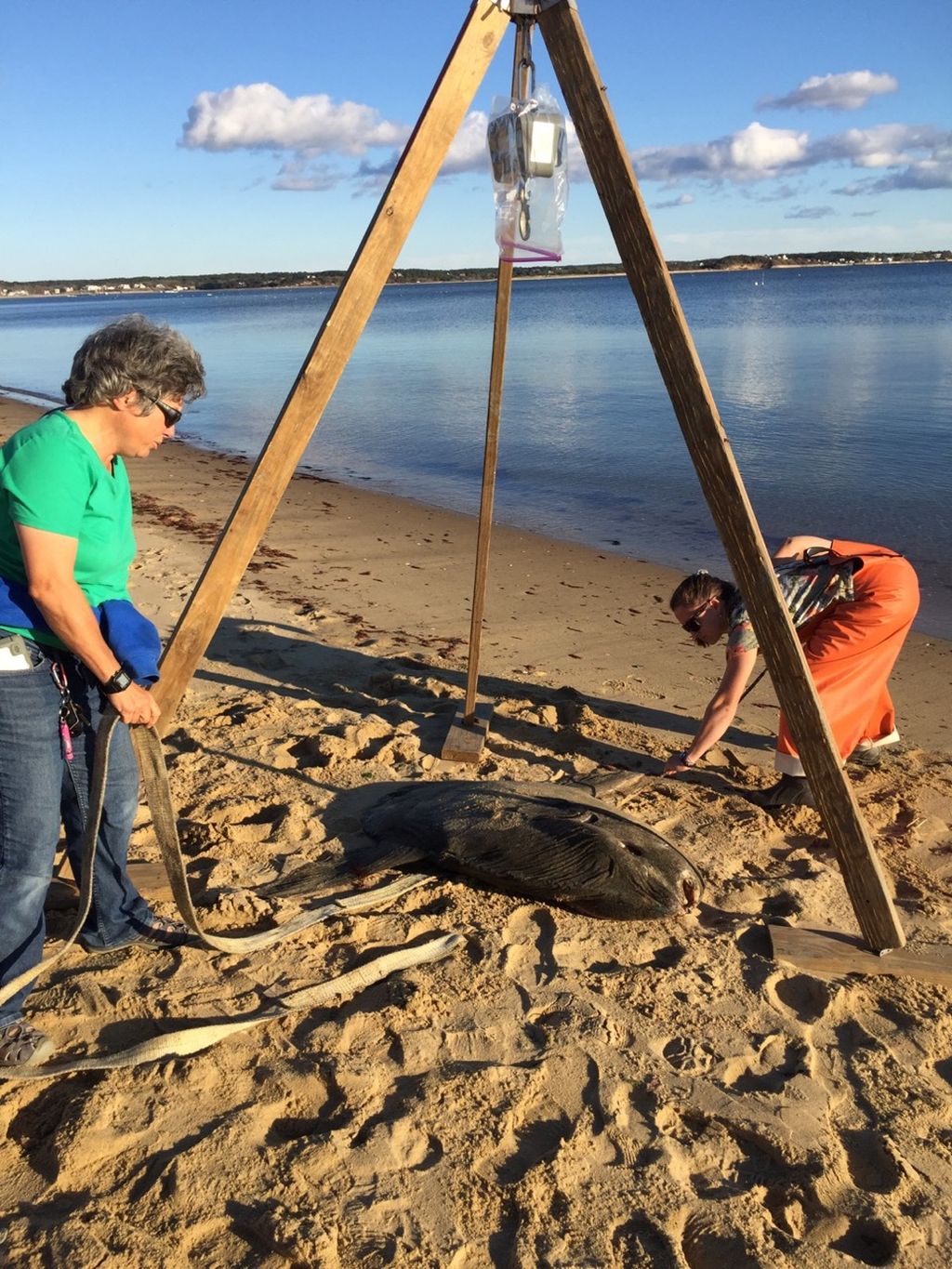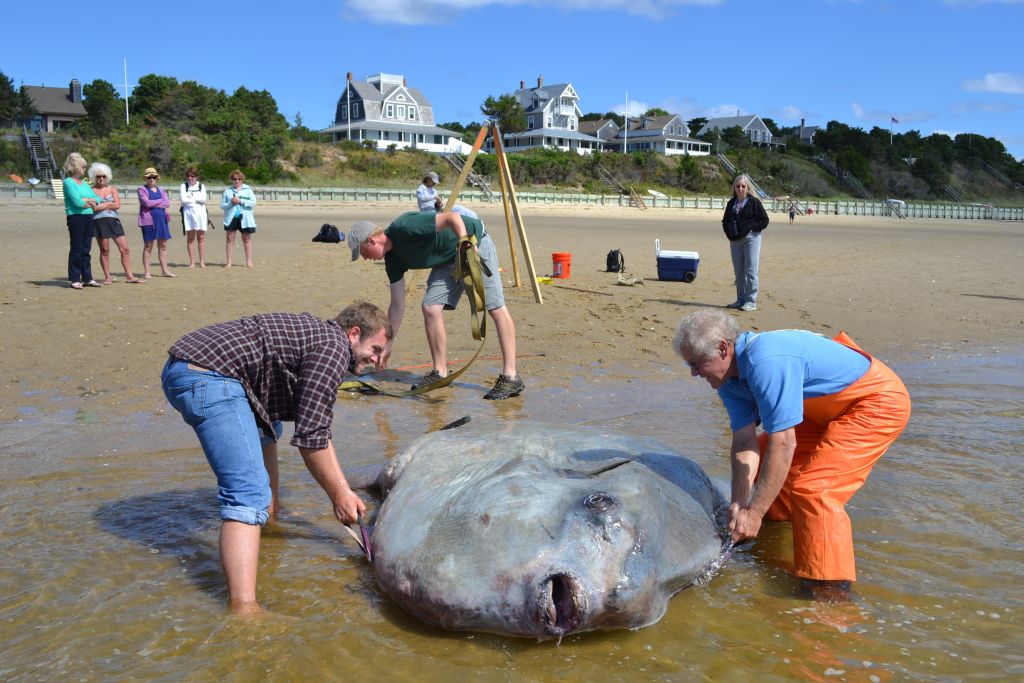As anyone who walks the beaches of Cape Cod knows, all kinds of strange things are brought in by the tide every day: whelk egg cases, buoys, mysterious blobs from the sea, and—in the fall—even cold-stunned sea turtles. There is one animal in particular, however, that even the most veteran of beach walkers is often shocked to encounter: the Mola mola, or ocean sunfish.

When at the water’s surface, ocean sunfish swim on their sides. The dorsal fin can be mistaken for a shark’s. (photo by Carol Krill Carson).
This incredible and alien fish shaped like a giant Frisbee can weigh over 2,000 pounds, and reach almost eight feet in length. It is the largest bony fish. They subsist mainly on jellyfish, and are found in seas across the globe. A number of these amazing animals make their way into Cape Cod Bay each year, and because they like to bask in the sun on the water’s surface (hence the name sunfish) they are often spotted by boaters or whale watches. Not much is known about the number of individuals or ages of the molas that visit the bay in the summer, but our good friends at the New England Coastal Wildlife Alliance (NECWA) are working to solve some of these mysteries.

New England Coastal Wildlife Alliance founder Krill Carson (left) and student Barbara Cross prepare to weigh a beached ocean sunfish in Wellfleet. Some have weighed in at over a half ton!
Readers both on and off the Cape may be familiar with the annual sea turtle cold-stunning event we experience in late fall. Juvenile sea turtles, having spent the summer in the warm ocean waters of Cape Cod Bay, become trapped as the water cools, and are washed ashore. Not many people, however, may be aware that juvenile sunfish strand as well, weeks before the sea turtles begin to appear on our beaches.

This ocean sunfish stranded at Wellfleet’s Mayo Beach in September of 2012. As you can see, it’s a seriously big fish! (photo by Spring Beckhorn).
Our colleagues at NECWA believe that juvenile sunfish experience the same issues as juvenile sea turtles—they come to the Cape to feed on plentiful prey, but get trapped by the arm of Cape Cod and eventually cold-stun. They too are washed ashore, and become stranded as the tides drop. Although we are able to rescue and recover young sea turtles that strand, it is immensely difficult to rescue a stranded mola.
Juvenile loggerheads, the largest sea turtle species that strand, typically weigh under a hundred pounds and are two or three feet long. A juvenile sunfish, however, can easily weigh over three or four hundred pounds and be four to six feet long. They can strand at tidal creeks in feet of mud, or flats that stretch for half a mile. This is where the greatest challenge becomes clear when trying to rescue a sunfish: sea turtles breathe air and can thus remain on a beach for several hours; a sunfish, which breathes only water, cannot.

Ocean sunfish can weigh a ton and it’s very difficult to return them to deeper water when they get stuck on a mud flat. (photo by Olivia Bourque).
Unfortunately, there is still not an effective way to rescue and reliably transport a stranded sunfish. The vital factor for a rescue is timing: sunfish typically strand at high tide, and every minute ashore is a race against the falling tide. Last week several Wellfleet Bay staff responded to a report of a stranded sunfish in several feet of water. By the time we reached the fish, however, it was floundering in only six inches of water. After an agonizing thirty minutes, standing on salvaged boards in knee-deep mud, hauling on a tarp, we were forced to abandon our rescue attempt. It was some consolation, however, to know that Krill Carson, director of NECWA, was en route to necropsy the fish and at least gather precious biological data.
With the power of the Internet (and viral videos), ocean sunfish are becoming more well known to the world at large. Now we and our colleagues hope to harness the power of citizen science to gain insight into the habits, lifestyles, and rescue of these mysterious fish. If you see a sunfish, either in the water or stranded onshore, please report it to www.nebshark.com We thank you!
This post was contributed by Rebecca Shoer who has led Wellfleet Bay’s field teams for both sea turtle rescue and diamondback terrapin conservation since Spring of 2015. She also was a member of the 2016 Coastal Waterbird team.

